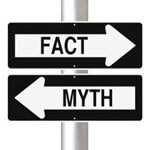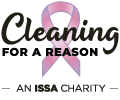Articles
Myths and Realities About VOCs
Categories: Cleaning for Health & Safety, Government Affairs, Sustainability & ESG
By Jennifer Meek | April 16, 2018 << Back to Articles
As an employee of a manufacturer of green cleaning products―many of which contain significantly reduced amounts of volatile organic compounds (VOCs) ―it might come as a surprise that I must admit the following: not all VOCs are harmful. Assuming that all VOCs are harmful is one of several misconceptions about VOCs. While some of these negative perceptions are indeed warranted, some are not.
The U.S. Environmental Protection Agency—or EPA—defines VOCs as “gases emitted from certain solids or liquids. They include a variety of chemicals, some of which may have short- and long-term adverse health effects. Examples of products that may emit VOCs include paints, paint strippers, conventional cleaning chemicals, pesticides, building materials and furnishings, office equipment such as copiers and printers, glues and adhesives, permanent markers, and photographic solutions.”
The following is designed to correct or clarify some of the common misconceptions about VOCs.
Misconception No. 1: “All VOCs Are Harmful”
For the most part, all VOCs are harmful. Individually, some VOCs are more harmful than others. However, just about all VOCs react with oxides of nitrogen and create ground-level ozone. VOCs have different toxicities, some of which can negatively impact health while others have little or no known effect. Other factors that can impact how harmful a VOC may be is the level of exposure, the length of exposure, and whether the exposure is in the outdoor environment or indoors. VOCs can build up indoors, and as they do, they have greater potential of affecting health.
Misconception No. 2: “All VOCs Are Man-Made”
While many of the more problematic VOCs are found in paints, building materials, and conventional cleaning products, large amounts of VOCs are also emitted from natural sources such as plants and trees. In some cases, the odors or fragrances released by plants are actually volatiles—a form of VOCs. These emissions typically come from the leaves of some plants, and levels can vary depending on temperature, sunlight, growth of the plant, and a variety of other factors. Because these VOCs are released in the outdoor environment, they may have less impact on human health. However, the bottom line is that while many man-made products do release VOCs, nature does a pretty good job of it as well.
Misconception No. 3: “If a Product Claims It Has Zero VOCs, Then It Has Zero VOCs”
This is partially true. There really is no such thing as a completely zero-VOC or VOC-free product. However, if a product has only what is referred to as trace amounts of VOCs, it may be able to claim it has none. However, manufacturers―including cleaning manufacturers―must be very careful using this zero-VOC claim. In 2012, two leading paint companies that claimed some of their paints had zero VOCs faced charges from the U.S. Federal Trade Commission (FTC) that they misled consumers. According to the FTC, the paints did release more than a trace amount of VOCs when used in certain situations and, as a result, could not make the VOC-free claims.
Precautions Nonetheless
While we now know that some VOCs may have little or no effect on human health, the reality is that many can and do negatively affect health. This impact can be worse on young children and the elderly than on others. With this in mind, cleaning professionals should always take the following steps to help minimize VOC exposure for themselves and all building occupants. These include the following:
- Always make sure there is adequate ventilation when using certain products such as paints, building materials, and even some conventional cleaning products.
- Try not to store large containers of chemicals or other products in the workplace.
- Even when stored in containers, they can release potentially harmful VOCs.
- If selecting a product for a school or a facility used by elderly people, read the product’s label, read the product’s material safety data sheet, and ask your distributor about the product’s VOC levels. Typically, a green-certified product will have fewer VOCs than a conventional product.
- Always follow the instructions on how to dilute the product as well as how to use it.
Finally, many cleaning professionals are now directly involved in the operations of the facilities they clean and maintain. Be sure to advise building owners and managers that VOCs are found in a wide variety of products―from glues to carpets to cleaning products―and before selecting any building material for the facility, consider that product’s VOCs content.

About the Author.
Jennifer Meek is the director of marketing for Charlotte Products, manufacturers of professional cleaning and green cleaning products. She may be reached via her company website at www.charlotteproducts.com.





